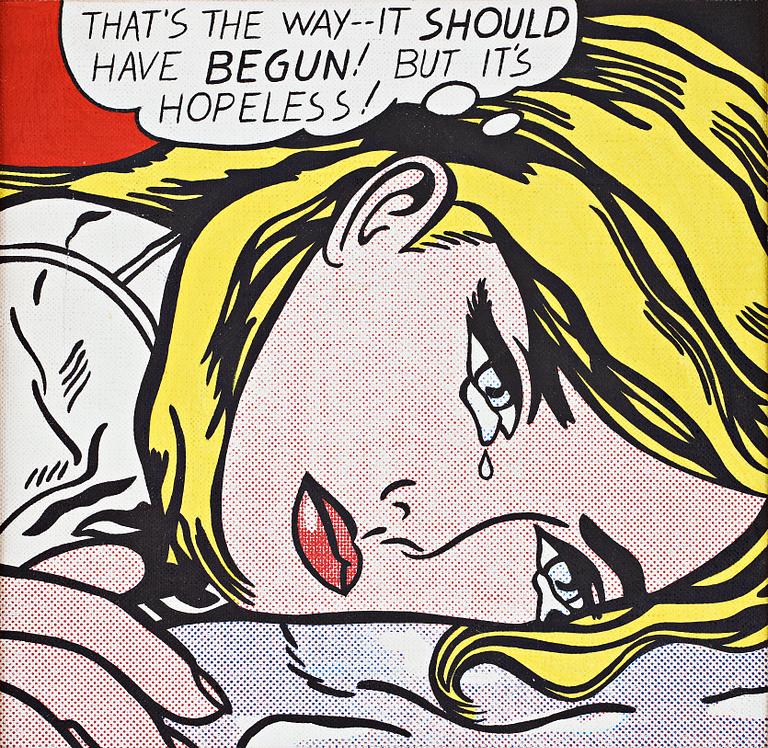Richard H. Pettibone
"Roy Lichtenstein Hopeless 1963"
Signed Richard Pettibone and dated 1974 on verso. Acrylic and silkscreen on canvas in artist's frame 19.3 x 19.8 cm.
Täydennyslista
Provenance: OK Harris Gallery, New York, USA. Galerie Aronowitsch, Stockholm, Sweden. Private Collection, Stockholm, Sweden.
Alkuperä - Provenienssi
OK Harris Gallery, New York, USA. Galerie Aronowitsch, Stockholm, Sweden. Private Collection, Stockholm, Sweden.
Muut tiedot
Richard Pettibone’s version of Roy Lichtenstein’s “Hopeless” is an excellent example of American appropriation art. Pettibone was one of the pioneers of this genre. For more than 40 years, he has produced precise postcard-sized paintings, copies of familiar masterworks by contemporary artists. His works include tiny versions of Warhol’s soup tins, Lichtenstein’s cartoon panels and Mondrian’s right angles. In his art that represents art, Pettibone seeks to ask questions such as: Who owns an artistic idea? What is originality? His art has played a major role in the mix of inspiration, borrowing and recycling that makes up postmodernist art.
Artists who work with appropriation art deliberately copy existing images and works of art to transform them into their own art. This is not theft or plagiarism as they do not claim to be the originators of these pictures. Instead appropriation artists want the audience to recognise the pictures they have recreated and transfer the context and their associations from this subject to the new work, whether this is a painting, a sculpture, a collage, an object or an entire installation.
Pettibone started producing exact copies of existing works of art in miniature format in 1964. He based the size of the work on pictures he had seen in magazines, such as Art Forum, and then reproduced them with pedantic accuracy, recreating the process of the original artist and then mounting the canvases on frames.
“Roy Lichtenstein Hopeless 1963” replicates one of Roy Lichtenstein’s best-known pictures, including the tiny dots that comprise the field of colour in Lichtenstein’s earliest work.




























